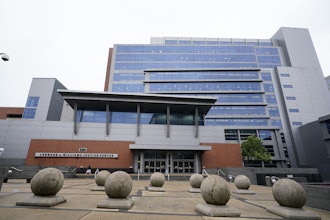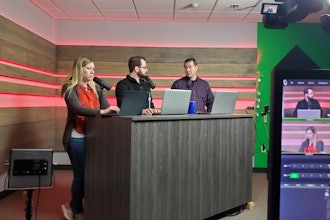
There is still time to ensure an even more prosperous year by developing a conscious strategy to address blind spots. (Blind spots can be positive as well as negative.) We’ll look at persistent blind spots common to many organizations, a communication climate which can be a barrier to perceiving blind spots, and other areas where vigilance is needed. This framework allows you to respond to and shape your environment rather than constantly reacting.
Basic Fiscal Framework
Consider four areas to look for with organizational blind spots:
- Plan for appropriate natural and man-made disasters.
- Make sure the organization is ethical in its relationships with customers, vendors, and regulators.
- Examine persistent low grade problems which seem to be gaining momentum.
- Use your intuition to point out opportunities for further investigation.
Although the likelihood of disasters is small, their outcome can be devastating. None of us likes to contemplate the consequences of disaster; however, they are part of the territory of doing business. Whether natural or man-made, they have the potential to bring operations to a grinding halt, so reduce the possibility of bad things happening to your good company.
Sometimes financial and competitive pressures cause ethical boundaries to be crossed.
- Does your strategy create and maintain the right ethical climate within your business?
- Are customers, vendors, and regulators dealt with transparently and fairly?
- Is there a culture of teamwork rather than one of exploitation?
If the answer to any other these questions is no, address the issue by creating a positive ethical climate, informed by ideas of right and wrong, the creation of value and mutual respect.
Are there issues continually on the priority list which never seem to work their way to the top? Are some increasing in importance? Perhaps they might be symptoms of a bigger challenge facing your company. Research and think these problems through. Some may turn out to be like the dead parakeet in the coal mine symptomatic of life-threatening gas fumes. Create an atmosphere where time is given to persistent problems so their real magnitude can be determined and associated blind spots identified early so they can be corrected.
Your intuition helps find blind spots. Intuition is the product of accumulated experience and subconscious rumination but don’t necessarily expect AHA! moments where answers appear in some pristine neatly packaged manner. Rather, ideas may bubble up and serve as problem solving pointers to be researched and worked through.
Ferret Benefits and Reduce Risks
With this basic fiscal framework in place, let’s move to practical tactical steps. Searching for Million Dollar Blind Spots© and addressing underlying problems is a great way to promote company growth and efficiency.
You can’t tackle major blind spots on your own. Your organization must also look for faulty assumptions and sacred cows and be motivated to raise them in a collegial environment. This positive communication climate is a product of how your firm responds to people who raise problems to management.
People often think they are doing as much work as they can with the resources available, so it’s important to recognize that when a new problem is identified and a solution is required, people are given the tools and resources to do the job. This encourages people to address problems. When people see problems assigned without adequate tools and resources, this discourages people coming forward allowing blind spots to fester.
Another way to facilitate an open and positive communication climate is to ensure problem identification and resolution are independent. If there is an unwritten rule that those who raise a problem are automatically assigned to solve it, people already hard at work will be reluctant to raise problems. They don’t want anything new on their plate.
It also must feel safe to communicate in an organization. One of the quickest ways of undermining that sense of safety is to shoot the messenger. You want problems raised so that they can be recognized and solved. People need to be rewarded for uncovering blind spots.
An important skill for all employees including C level executives is active listening. This entails a focus on clearly hearing and understanding what is being said. Are employees truly being heard by members of the management team? The importance of effective communication can be highlighted by talking about it, putting resources (i.e. training) into making it happen, and rewarding people for effective communication skills.
A positive communication climate is critical to an organization’s ability to identify and resolve blind spots. To summarize, the following are actions that you can take to facilitate such an atmosphere.
- Assign appropriate tools and resources to people charged with solving problems.
- Make sure problem identification and problem assignment are two separate distinct steps in the problem solving process.
- Reward people for uncovering blind spots
- Train employees, including the C level team, in effective communication which includes active listening.
Effective communication not only uncovers problems; it also identifies new opportunities. If their past behaviors have comprised past communication, own it and acknowledge past mistakes. This will strengthen communication credibility moving forward. Make a conscious decision about what type of communication strategy your company wants and implement necessary changes to make it happen.
Growth and fiscal leadership expert, Gary W. Patterson, the FiscalDoctor® (www.FiscalDoctor.com), is the author of Million Dollar Blind Spots: 20/20 Vision for Financial Growth, enable growth through leverage you did not know you had. See how you score on the free fiscal quiz at https://fiscaldoctor.com/fiscal-quiz/.






















